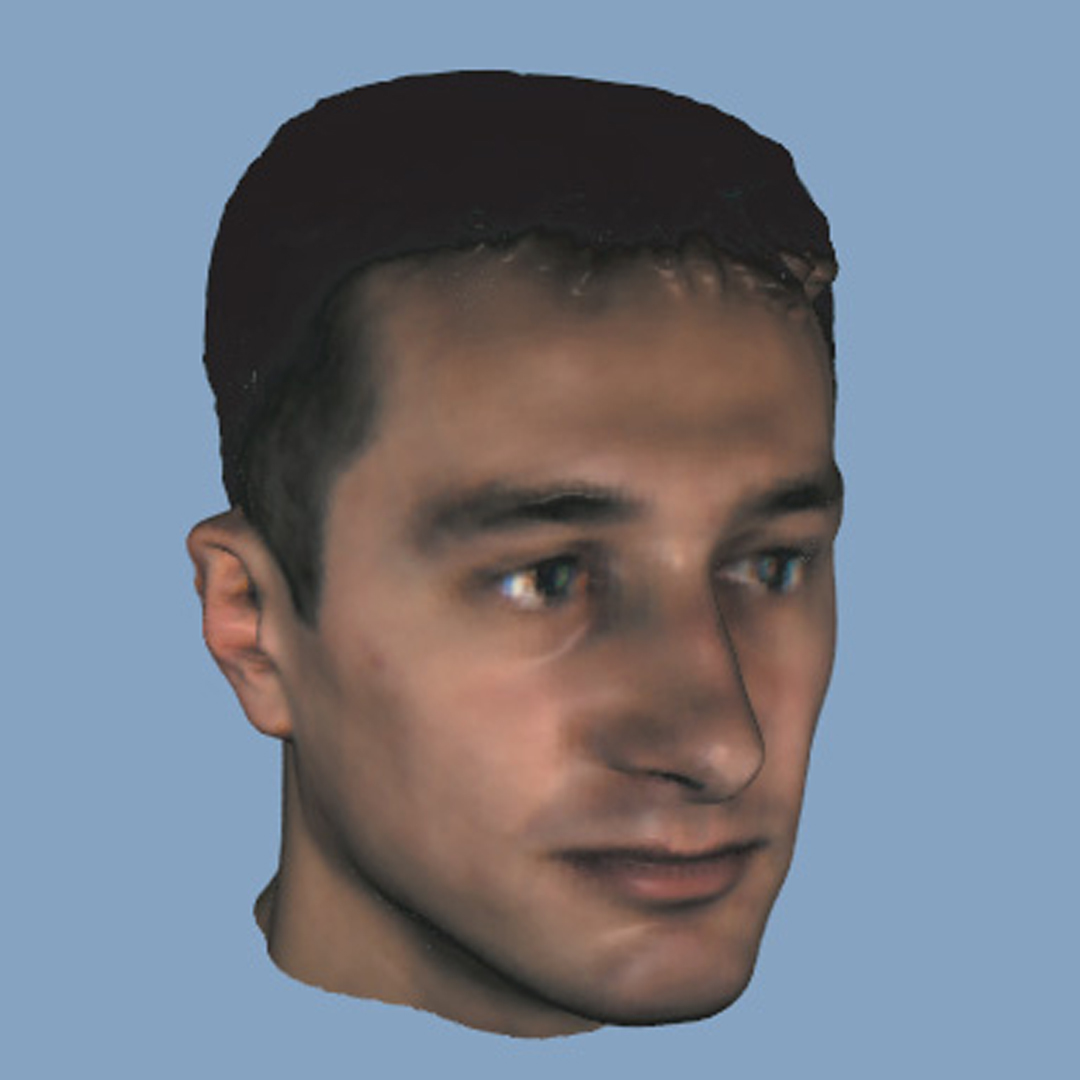“Surface splatting” by Zwicker, Pfister, van Baar and Gross
Conference:
Type(s):
Title:
- Surface splatting
Presenter(s)/Author(s):
Abstract:
Modern laser range and optical scanners need rendering techniques that can handle millions of points with high resolution textures. This paper describes a point rendering and texture filtering technique called surface splatting which directly renders opaque and transparent surfaces from point clouds without connectivity. It is based on a novel screen space formulation of the Elliptical Weighted Average (EWA) filter. Our rigorous mathematical analysis extends the texture resampling framework of Heckbert to irregularly spaced point samples. To render the points, we develop a surface splat primitive that implements the screen space EWA filter. Moreover, we show how to optimally sample image and procedural textures to irregular point data during pre-processing. We also compare the optimal algorithm with a more efficient view-independent EWA pre-filter. Surface splatting makes the benefits of EWA texture filtering available to point-based rendering. It provides high quality anisotropic texture filtering, hidden surface removal, edge anti-aliasing, and order-independent transparency.
References:
1. L. Carpenter. The A-buffer, an Antialiased Hidden Surface Method. In Computer Graphics, volume 18 of SIGGRAPH 84 Proceedings, pages 103-108. July 1984.
2. B. Curless and M. Levoy. A Volumetric Method for Building Complex Models from Range Images. In Computer Graphics, SIGGRAPH 96 Proceedings, pages 303-312. New Orleans, LA, August 1996.
3. N. Greene and P. Heckbert. Creating Raster Omnimax Images from Multiple Perspective Views Using the Elliptical Weighted Average Filter. IEEE Computer Graphics & Applications, 6(6):21-27, June 1986.
4. J. P. Grossman and W. Dally. Point Sample Rendering. In Rendering Techniques ’98, pages 181-192. Springer, Wien, Vienna, Austria, July 1998.
5. P. Heckbert. Survey of Texture Mapping. IEEE Computer Graphics & Applications, 6(11):56-67, November 1986.
6. P. Heckbert. Fundamentals of Texture Mapping and Image Warping. Master’s thesis, University of California at Berkeley, Department of Electrical Engineering and Computer Science, June 17 1989.
7. H. Hoppe, T. DeRose, T. Duchampt, J. McDonald, and W. Stuetzle. Surface Reconstruction from Unorganized Points. In Computer Graphics, SIGGRAPH 92 Proceedings, pages 71-78. Chicago, IL, July 1992.
8. N. Jouppi and C. Chang. Z 3 : An Economical Hardware Technique for High- Quality Antialiasing and Transparency. In Proceedings of the Eurographics/SIGGRAPH Workshop on Graphics Hardware 1999, pages 85-93. Los Angeles, CA, August 1999.
9. M. Levoy, K. Pulli, B. Curless, S. Rusinkiewicz, D. Koller, L. Pereira, M. Ginzton, S. Anderson, J. Davis, J. Ginsberg, J. Shade, and D. Fulk. The Digital Michelangelo Project: 3D Scanning of Large Statues. In Computer Graphics, SIGGRAPH 2000 Proceedings, pages 131-144. Los Angeles, CA, July 2000.
10. M. Levoy and T. Whitted. The Use of Points as Display Primitives. Technical Report TR 85-022, The University of North Carolina at Chapel Hill, Department of Computer Science, 1985.
11. T. W. Mark, L. McMillan, and G. Bishop. Post-Rendering 3D Warping. In 1997 Symposium on Interactive 3D Graphics, pages 7-16. ACM SIGGRAPH, April 1997.
12. W. Matusik, C. Buehler, R. Raskar, S. Gortler, and L. McMillan. Image-Based Visual Hulls. In Computer Graphics, SIGGRAPH 2000 Proceedings, pages 369- 374. Los Angeles, CA, July 2000.
13. J. McCormack, R. Perry, K. Farkas, and N. Jouppi. Feline: Fast Elliptical Lines for Anisotropic Texture Mapping. In Computer Graphics, SIGGRAPH ’99 Proceedings, pages 243-250. Los Angeles, CA, August 1999.
14. K. Mueller, T. Moeller, J.E. Swan, R. Crawfis, N. Shareef, and R. Yagel. Splatting Errors and Antialiasing. IEEE Transactions on Visualization and Computer Graphics, 4(2):178-191, April-June 1998.
15. H. Pfister, M. Zwicker, J. van Baar, and M Gross. Surfels: Surface Elements as Rendering Primitives. In Computer Graphics, SIGGRAPH 2000 Proceedings, pages 335-342. Los Angeles, CA, July 2000.
16. S. Rusinkiewicz and M. Levoy. QSplat: A Multiresolution Point Rendering System for Large Meshes. In Computer Graphics, SIGGRAPH 2000 Proceedings, pages 343-352. Los Angeles, CA, July 2000.
17. J. Shade, S. J. Gortler, L. He, and R. Szeliski. Layered Depth Images. In Computer Graphics, SIGGRAPH 98 Proceedings, pages 231-242. Orlando, FL, July 1998.
18. J. E. Swan, K. Mueller, T. Moeller, N. Shareef, R. Crawfis, and R. Yagel. An Anti-Aliasing Technique for Splatting. In Proceedings of the 1997 IEEE Visualization Conference, pages 197-204. Phoenix, AZ, October 1997.
19. L. Westover. Footprint Evaluation for Volume Rendering. In Computer Graphics, Proceedings of SIGGRAPH 90, pages 367-376. August 1990.
20. S. Winner, M. Kelley, B. Pease, B. Rivard, and A. Yen. Hardware Accelerated Rendering of Antialiasing Using a Modified A-Buffer Algorithm. pages 307- 316, August 1997.
21. G. Wolberg. Digital Image Warping. IEEE Computer Society Press, Los Alamitos, California, 1990.





